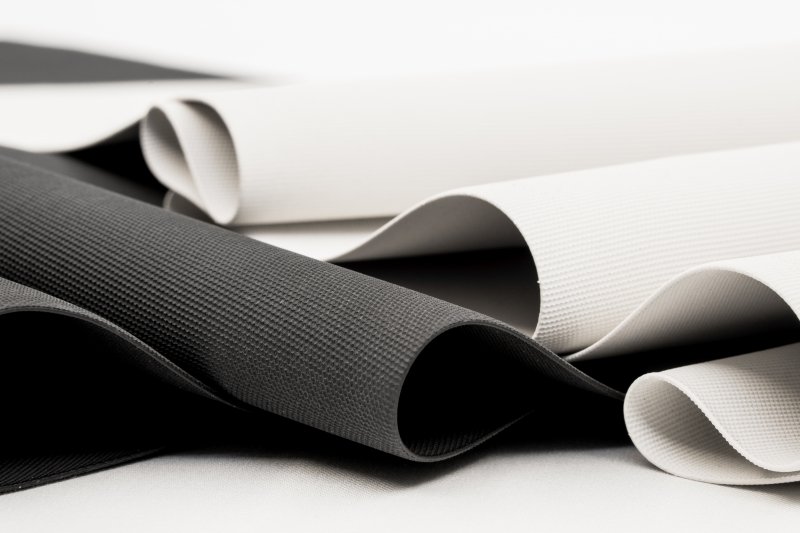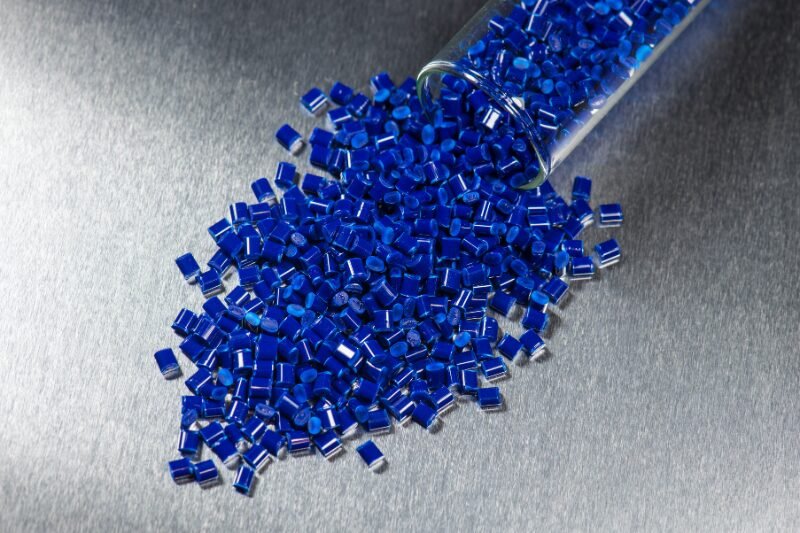Rubber and plastic are both widely used materials, each with its unique properties, applications, and environmental impact. While they both belong to the polymer family, the differences between rubber and plastic in chemical composition, manufacturing processes, and sustainability make them suitable for different uses. In this blog, we’ll delve deep into the comparison of rubber vs plastic, touching on their environmental impact, cost, durability, and applications, while also discussing sustainable alternatives to both materials.

The short answer is no. Rubber and plastic may seem similar, but they are distinct in their composition and behavior. While both are polymers, rubber is classified as an elastomer due to its elastic properties, meaning it can stretch and return to its original shape. Plastic, on the other hand, is generally more rigid and versatile in terms of molding and shaping. This difference in elasticity vs plasticity sets the two materials apart.

Rubber, whether natural or synthetic, is made from long polymer chains that give it its signature elasticity. These polymers are made of smaller building blocks called monomers, which link together to form rubber’s flexible and durable structure. Additives like sulfur (used in vulcanization) are also essential in giving rubber its strength and resistance to heat.
The chemical composition of rubber is key to its versatility, from polyisoprene in natural rubber to synthetic rubbers like SBR (Styrene-Butadiene Rubber). However, understanding the intricate details of rubber’s chemical properties, including its melting temperature and the role of additives, requires a deeper look.
Rubber is a versatile material, categorized into two types:
Each type of rubber offers unique advantages, but if you want to dive deeper into the differences between natural and synthetic rubber, their applications, and how they compare, check out our detailed blog post Everything You Need To Know About Natural Rubber And Synthetic Rubber.

Plastic is a synthetic material made from long chains of polymers derived primarily from petrochemical sources like crude oil or natural gas. These polymers are built from smaller units called monomers, which are chemically bonded to form a solid structure. Unlike rubber, plastics are generally rigid and do not stretch back to their original form once deformed.
Plastics come in many varieties, including Polyethylene (PE), Polypropylene (PP), and PVC, each with its own unique properties suited for different applications—whether it’s packaging, automotive parts, or household items. Additives are often incorporated into plastics to enhance features like durability, flexibility, or resistance to chemicals.
Plastic is a synthetic material made from polymer chains derived from crude oil or natural gas. It is categorized into two types:
While both rubber and plastic are used across industries, their differences in flexibility and resilience make them suitable for different applications. For instance, plastic is favored in the packaging industry due to its malleability, whereas rubber is used in tires and gaskets for its elasticity.

Rubber production can be categorized into two main types: natural rubber and synthetic rubber. Each type undergoes distinct processes from raw material extraction to final product formation.
1. Natural Rubber Production
Natural rubber originates from the latex sap of Hevea brasiliensis trees, primarily grown in tropical regions. The process of transforming natural latex into usable rubber involves several steps:
For more details on the natural rubber manufacturing process, you can visit our blog post on Latex vs. Natural Rubber: Understanding the Big Differences.

2. Synthetic Rubber Production
Unlike natural rubber, synthetic rubber is created from petroleum-based chemicals. The process of making synthetic rubber includes:
Plastic production is vastly different from rubber, primarily involving polymerization or polycondensation of hydrocarbons derived from crude oil and natural gas. The two main types of plastic manufacturing processes are for thermoplastics and thermosetting plastics.
1. Thermoplastics

2. Thermosetting Plastics

The primary difference between rubber and plastic is how they react to external forces:
| Common Applications | Industry | Why It’s Used |
| Tires | Automotive | Elasticity, durability under stress, heat resistance |
| Gaskets and Seals | Industrial, Automotive, Aerospace | Flexibility, ability to create airtight seals, vibration resistance |
| Medical Tubing | Medical | Non-toxic, flexible, suitable for sterilization |
| Shock Absorbers | Construction, Industrial | Vibration and impact resistance, elasticity under pressure |
| Waterproofing Membranes | Construction | Elasticity, ability to withstand environmental stressors |
| Aircraft Seals and Hoses | Aerospace | Extreme temperature resistance, chemical resistance |
| Common Applications | Industry | Why It’s Used |
| Packaging (Bottles, Bags) | Packaging | Lightweight, low cost, easy to mold |
| Electronic Casings | Electronics | Insulation properties, durability, ease of molding |
| Furniture | Home Goods | Lightweight, durable, flexible design options |
| Dashboards and Bumpers | Automotive | Lightweight, durability, heat resistance |
| Syringes, IV Bags | Medical | Cost-effective, sterile, disposable |
Rubber tends to be favored in applications requiring high elasticity, vibration resistance, and durability under stress, while plastic is more commonly used in rigid structures and when flexibility in design or cost-efficiency is the primary concern.
For more details on rubber sheets applications, refer to our blog Rubber Sheets: Know The Types & Applications In Various Industries.

When choosing between rubber and plastic for your project, consider the following:
When selecting between rubber and plastic for a project, it’s essential to consider the material’s unique properties, applications, environmental impact, and cost-effectiveness. Both materials offer distinct advantages, but the right choice depends on the specific demands of your project.
| Criteria | Rubber | Plastic |
| Flexibility & Elasticity | Rubber is an elastomer, offering superior elasticity. It can stretch and return to its original shape, making it ideal for applications like tires, seals, and gaskets. | Plastics generally lack elasticity, but thermoplastics can be molded and shaped into intricate designs. However, they don’t offer the stretch that rubber does. |
| Temperature Resistance | Certain rubbers, like silicone and neoprene, can withstand extreme heat and cold. Ideal for high-temperature environments like automotive and aerospace industries. | Some plastics, like PTFE and HDPE, can resist high temperatures, but most soften under extreme heat. Excellent for applications where temperature exposure is moderate. |
| Durability & Strength | Rubber excels in durability, especially under physical stress, abrasion, and exposure to vibration. Ideal for industrial and automotive applications. | Plastic is generally less durable under stress but offers good resistance to chemicals and moisture. Best suited for rigid, lightweight applications like packaging. |
| Chemical Resistance | Synthetic rubbers like nitrile and neoprene are resistant to oils, solvents, and certain chemicals. Natural rubber is more vulnerable to chemicals. | Many plastics, such as PVC and HDPE, have excellent chemical resistance, especially against acids, alkalis, and solvents. Ideal for chemical storage and piping. |
| Environmental Impact | Natural rubber is biodegradable and renewable but can lead to deforestation. Synthetic rubber contributes to microplastic pollution. Recycled rubber offers a more eco-friendly alternative. | Plastics take hundreds to thousands of years to decompose. However, biodegradable plastics and recycled plastics provide more sustainable options for reducing environmental harm. |
| Cost | Generally more expensive due to higher production costs and specialized applications, but rubber’s durability can offset the cost in long-term projects. | Plastic is typically cheaper, especially for mass production. Thermoplastics provide cost-effective solutions for industries like packaging and consumer goods. |
| Applications | Rubber is used for tires, seals, gaskets, hoses, and other products requiring flexibility and durability. Best for automotive, aerospace, and industrial sectors. | Plastic is versatile and used for packaging, electronics, furniture, and medical devices. Excellent for projects where design flexibility and cost are more critical than elasticity. |
By weighing these factors, you can make an informed decision on which material best suits your project’s needs.
At Min Yuen, we go beyond manufacturing common rubbery products — we deliver tailored solutions for medical, exercise therapy, and industrial sectors. Our focus on quality and innovation ensures you get high-performance products that meet your unique needs.
Precision in Customization
We provide a diverse selection of premium materials, including Natural Rubber, Latex-Free Synthetic Rubber, NBR Nitrile, and CR Neoprene. Each material is crafted to offer optimal performance and durability in its specific application, from industrial coverings to healthcare equipment.
Built for Industry-Specific Needs
Min Yuen Rubber Sheets are designed to excel across various industries, from healthcare to industrial manufacturing. Whether for garments or industrial uses, our products are designed for durability and precision in performance.

